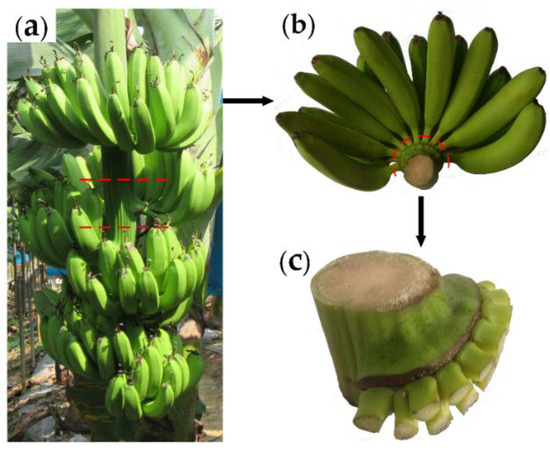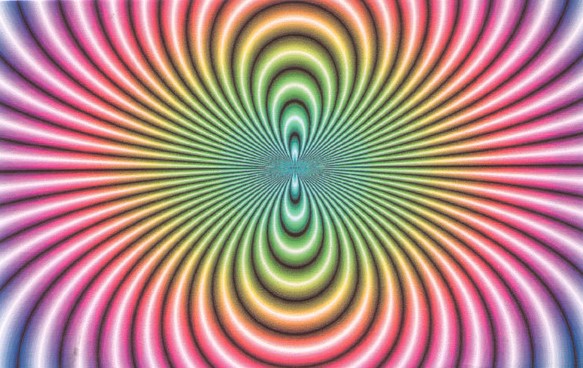In Sweden (and perhaps all of EU?) it is not allowed to say “no x” if there’s normally no “x” in that type of product, e.g glutenfree butter.
Relevant XKCD
Obligatory “there really is an XKCD for everything” comment. I am genuinely surprised by this one.
Imagine if a cereal company tried this irl, but fucked up and said, “now asbestos free”. Imagine the chaos.
Baby powder has way less asbestos in it now than it did back in the 50’s.
Tbf anything and everything had asbestos back then, everyone was fcked
You mean to tell me I’ve been paying extra for boneless bananas for no reason?
What’s funny about this (apart from your excellent joke) is that there are actually a lot of places, where they are a common crop, where bananas are advertised as “boneless”. This is because, I believe the bit that connects the banana bunch to the plant (not a tree!) Is sometimes called the “bone” (I believe it’s “C” in this image:

Having the grocer machete this bit off for you presumably cuts down on the unnecessary weight on your moped back home, and maybe even the costs, if buying by weight.
Caveat: This is just what I have come to understand, from travel experience and curiosity. If there are any actual “Bananologists” about, please feel free to correct!
Why are those bananas growing upside down
That’s just how all bananas grow
u telling me they grow erect?
Like a morning wood
Oh boy, I’d love to see marshmallows not advertised as 99% fat free.
I remember seeing a giant jug of Cotton Candy at Walmart that said “A naturally fat-free food!”
Like, no shit, obviously, it’s literally sugar and food coloring.
I may be wrong on this but I’m pretty sure I’ve seen some seemingly redundant “no gluten”, “lactose free” or “vegan/vegetarian” labels on a lot of products in german and austrian supermarkets. Could be that these products are labeled that way because they were made in an allergen free environment i.e. no parallel production of something containing these allergens.
Well some products one would assumes to be vegan/vegetarian normally aren’t. e.g. Wine and Cheese
Why isn’t wine vegan? Like, it’s just rotten grape juice
gelatin and isinglass are often added to remove impurities and yeast left from the fermentation. They are removed afterwards, but the wine can’t be called vegan anymore.
Unfortunately there are very few redundant “vegan” labels since even plain sugar can be non-vegan (being processed using bone char) not to mention a ton of different fats, colourings, and other additives that can all come from either animal, plant, or synthetic source, and unless the manufacturer confirms, as a customer you have no way of knowing which it is, unless they’ve labelled it.
In Austria for sure, it’s simply funny what they manage to write on some products…
Maybe they were imported and not caught?
Oh, it’s forbidden. I always wondered why no company did that.
But why do they put “vegan” on apple juice then? Does it mean it’s bug-free?
Some apple juices contain an ingredient called isinglass which is made from dried fish bladders. And some apples may be waxed with beeswax (from bees) or shellac (from bugs) before being juiced.
But they are still saying it but in different language.
4 bullet points in English. 3 in the others.
Don’t add up.
My point is that if it is how the comment I replied to says, it wouldn’t make it ok just cause it’s written in a different language.
I feel I can explain this discrepancy with a bit of history.
TL;DR in the last paragraph.
The EU has a numbering system for additives, preservatives, colourings etc that have been tested and approved for human consumption, so instead of putting Sodium Sulphite, you can put E221. They used to be very very commonly listed in ingredients in the UK. The difference between Sodium Sulphite (E221) and Sodium Hydrogen Sulphite (E222) is unclear and unimportant to most consumers, so manufacturers just listed the “E numbers” instead.
In the UK, when it was discovered that certain food additives can trigger conditions such as ADHD, instead of naming the specific chemicals that were causing the problem, the British media just called them E numbers.
Cue a fair bit of hysteria about how E numbers are harmful and some legitimate concerns, and suddenly the public start checking their food to see if it has any of those nasty E numbers, and they find to their horror that a lot of processed food contains a lot of E numbers, because preservatives, flavour enhancers, food colourings, sweeteners make food more appealing, and people re-buy appealing food. Suddenly it’s very much in the manufacturers’ interests to name the chemicals instead of the shorter E number so even today in the UK it’s more common to name the chemical than the E number, which was never required anyway. To prevent hysteria over “chemicals” in food and to inform, it’s become common to label then with their purposes - flavour enhancers, colours, preservatives etc.
There’s still some really quite noxious chemicals that are perfectly legal to put in food. My son’s A-level chemistry teacher saw him drinking the same brand of squash every day and commented “You drink a lot of that. Are you sure there’s no aspartame in it? There’s no way I would deliberately put aspartame inside my body.” Make of that what you will.
Anyway, the media storm around E numbers dies down because the manufacturers largely just avoid naming them that way, and carry on pretty much as before. Some kids have had reactions and occasionally news stories come out, but the media persist in avoiding using chemical names.
There’s some perfectly sensible advice that says that it you eat less processed food, and especially less “hyper-processed” food, and instead eat more food made from more natural ingredients, you get a more balanced diet with better vitamin and mineral intake, thus feeling feeling fuller for longer. (If the food is designed, with proper experimental testing, to get you to buy it more, it is inevitably also designed to get you to eat it more than you need to.)
But how can you tell if the food is processed or not? What’s the difference between me spending half an hour mixing the ingredients and then mixing them for me and precooking it so I just bung it in the pan? Well, a random member of the public almost certainly has salt and pepper, maybe even a few herbs and spices, but probably not any L-alanine. Look out for ingredients that you wouldn’t use at home, they’re probably a sign that it’s highly processed.
Hence the nearly good information that there aren’t any artificial flavours or colours. Nearly good, because it doesn’t mention preservatives and nearly good because it is definitely and certainly processed food designed to maximise profits rather than health.
So the UK food processing industries continue to aim naturally for maximising re-buying which includes reassuring the consumers that this is the healthiest (pre-prepared, highly processed, addictively tasty) low-priced convenience food they can, whilst being attractive to supermarket profits with longer shelf lives. If the bacteria and mold-killing preservatives aren’t as kind to human biology as just making it yourself and eating it sooner, and a few people have had reactions, it’s just not obviously bad enough for it to be something people will do anything about.
**TL;DR ** So, my understanding is that the hysteria about artifical flavours and colours was highest in the UK and the folks from the other countries aren’t looking for technicalities to reassure them about the ingredients because they were never trained by their media to hunt for nasties in the small print - those that care can see straight away this is very firmly in the processed food category, and those that don’t, don’t.
My son’s A-level chemistry teacher saw him drinking the same brand of squash every day and commented “You drink a lot of that. Are you sure there’s no aspartame in it? There’s no way I would deliberately put aspartame inside my body.” Make of that what you will.
There’s no way I will deliberately put aspartame inside my body but only because it just simply does not taste sweet to me but instead it tastes bitter. I’m not the only one either https://www.futurity.org/why-fake-sweeteners-can-taste-funky/
Here’s what I make of that children’s science teacher comment about aspartame: https://www.who.int/news/item/14-07-2023-aspartame-hazard-and-risk-assessment-results-released
Kinda funny that this person correctly explains the silly hysteria people had over E-numbers and then in the same comment spreads some silly hysteria over aspartame.
Aspartame is E951, by the way.
deleted by creator
The science teacher’s comment is far removed from the evidence presented in that link:
with a can of diet soft drink containing 200 or 300 mg of aspartame, an adult weighing 70kg would need to consume more than 9–14 cans per day to exceed the acceptable daily intake
That was good information, thank you.
For example, with a can of diet soft drink containing 200 or 300 mg of aspartame, an adult weighing 70kg would need to consume more than 9–14 cans per day to exceed the acceptable daily intake, assuming no other intake from other food sources.
You’d be running to the bathroom every 5 minutes too
This was a wild ride, thanks for this hellava read. I appreciate you
Tl;dr Swedes and Finns care less than Brits
Perhaps. But without diving in, I’d bet it’s the other way around: there is something fishy about the claim, and it’s illegal to make there.
Finland definitely had the E code craze. And more recently about natrium glutamate, when many products advertised getting rid of it. That was basically fueled by FUD.
But processed meat basically requires nitrates (E249-250) to avoid bacteria growth and the recommended intake for those is rather low especially for children. That’s one I would worry about if processed meat is common in diet.
Great info, here. Thanks so much for helping to demystify.
I love the discussion here as to possible reasons why the labeling is different.
That said, there’s a very good chance it’s just because the initial version had 3, got translated, then someone added a 4th item and it never got translated.
I know someone responsible for these labels and descriptions for a fairly large company, can absolutely confirm this will happen a lot. The product has to go out to the stores and there is just no time to get these translation anymore. I also know of products that shipped to large stores with false information on the label, knowingly because changing it would take too much time and money.
Is it the no colors or preservatives bit?
I kinda wonder if it’s the only one omitted because the non-english places also wouldn’t have foods that use artificial colors or preservatives.
At least in germany its prohibited to use them for specific foods. And its not allowed to advertise with things that are required by law. So advertising ‘no colors and preservatives’ wouldn’t be allowed for some products.
You are correct. Not sure about the reasoning though.
Now googling if english speakers perceive colors and use preservatives differently.
This is true. Once I moved to the francosphere, I could only perceive colours and preservatives that are present, so there is no reason to tell me about colours and preservatives that are not present.
It’s takes 4-6 months to adjust.
Thank you. As soon as I went to Google I got distracted and ended up wasting my time on something else. Following internetiquette I’ll regard what you wrote as universal fact and won’t look back on the matter.
deleted by creator
But this isn’t multiple packages, it’s just different languages. Certainly a regulation like that would apply to English as well?
The us version of belvita packaging only has english on it. Maybe spanish. Definitely no swedish.
Probably that.
Most likely this.
This is most likely sold in Finland since both Finnish AND Swedish are official languages…
But I wonder why they don’t wanna tell the people who don’t speak English that additional piece of info. Do I smell bias in here?
Maybe they spelt preservatives wrong













